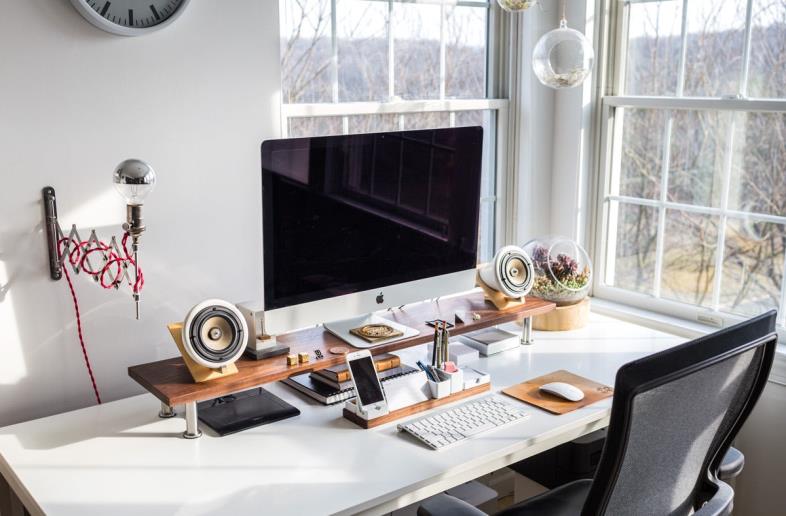Choosing the right office furniture, especially desks, is essential for creating a productive workspace. The design of an office desk can significantly influence not only the comfort of employees but also their overall productivity levels. With the rise of remote work and flexible office layouts, understanding how various desk designs impact efficiency has never been more important. This blog explores how office desks can enhance productivity and highlights twelve innovative desk designs that can make a substantial difference in the workplace.
The Importance of Desk Design in Productivity
Desk design plays a critical role in determining how effectively employees can work. A well-designed desk can facilitate better organization, reduce distractions, and promote healthier working postures. Conversely, poorly designed desks can lead to discomfort, frustration, and decreased focus. Here are some key factors to consider when evaluating how desk design affects productivity:
- Ergonomics: Ergonomic desks help maintain proper posture, reducing the risk of strain and injury. Desks that can be adjusted in height allow employees to switch between sitting and standing, promoting movement throughout the day.
- Organization: Desks with built-in storage solutions help keep the workspace tidy, allowing employees to easily access essential items without unnecessary distractions.
- Aesthetics: The visual appeal of a desk can influence mood and motivation. A well-designed desk that complements the office’s overall style can create a more inviting environment.
- Space Optimization: Desks designed for small spaces maximize functionality without compromising comfort. Compact designs can provide ample workspace while leaving room for movement.
12 Desk Designs That Make a Difference
1. Adjustable Height Desks
Adjustable height desks are a game-changer in the modern workplace. They allow employees to switch between sitting and standing, promoting movement and reducing fatigue. This flexibility is crucial for maintaining energy levels and focus throughout the day.
2. L-Shaped Desks
L-shaped desks offer a spacious work area while optimizing corner spaces. They provide ample surface area for multitasking and can accommodate multiple monitors, making them ideal for professionals who need to juggle various tasks simultaneously.
3. Corner Desks
Similar to L-shaped desks, corner desks make efficient use of office space. They create a cozy work nook, which can help employees feel more focused and less distracted. Corner desks also often come with built-in shelves, enhancing organization.
4. Standing Desks
Standing desks encourage employees to adopt healthier postures while working. Research has shown that standing desks can lead to increased productivity, especially in creative tasks. By allowing more movement, these desks can help combat the lethargy associated with prolonged sitting.
5. Collaborative Desks
Designed for teamwork, collaborative desks promote interaction among employees. These desks often have a communal layout, making it easier for teams to brainstorm and share ideas, ultimately leading to enhanced productivity.
6. Minimalist Desks
Minimalist desks focus on simplicity and functionality. By reducing clutter and distractions, they create a calming workspace that allows employees to concentrate on their tasks. This design philosophy often emphasizes clean lines and a straightforward aesthetic.
7. Modular Desks
Modular desks are adaptable and can be reconfigured to suit various needs. They can be expanded or rearranged to accommodate different team sizes or work styles. This versatility makes them ideal for dynamic work environments.
8. Executive Desks
Executive desks exude professionalism and are often designed with both style and functionality in mind. They typically offer ample storage and workspace, allowing for efficient organization of important documents and tools.
9. Sit-Stand Desks
Sit-stand desks combine the benefits of both sitting and standing desks, allowing users to adjust their height seamlessly. This flexibility encourages movement and can significantly enhance energy levels throughout the workday.
10. Wrap-Around Desks
Wrap-around desks provide extensive workspace and can facilitate collaboration among team members. These designs are perfect for open office layouts, allowing employees to interact while still having their designated work areas.
11. Desk with Built-in Storage
Desks with built-in storage solutions, such as drawers and shelves, help maintain organization. By keeping essential items within reach, employees can minimize distractions and focus on their tasks more efficiently.
12. High-Tech Desks
High-tech desks incorporate advanced technology features, such as built-in charging ports, wireless charging pads, and integrated power outlets. These desks support modern work needs, allowing employees to keep their devices powered and connected.
The Impact of Desk Design on Employee Well-Being
Beyond productivity, the right desk design can significantly impact employee well-being. A comfortable and functional workspace reduces stress and encourages positive mental health. When employees feel good in their work environment, they are more likely to be engaged and motivated, leading to better overall performance.
Conclusion
Investing in the right office furniture, particularly desks, is crucial for enhancing productivity in the workplace. By selecting designs that prioritize ergonomics, organization, and aesthetics, businesses can create an environment that fosters efficiency and employee satisfaction. Whether opting for adjustable height desks, minimalist designs, or high-tech solutions, the choices made in desk design can lead to a noticeable difference in productivity levels. In today’s fast-paced work environment, it’s essential to recognize the significant role that office desks play in driving success.





